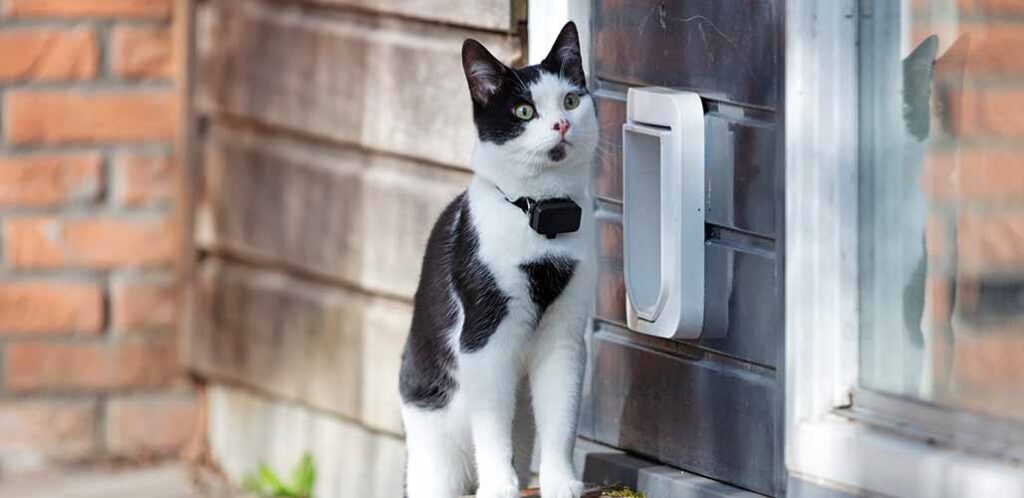
When I was a kid, I loved the cartoon The Cat Came Back. Back then I just adored the silliness of it, but as an adult I’ve also learned how the best jokes work because they have a grain of truth in them. And cats are master navigators. So how do cats find their way home? There’s a lot we know about how cats find their way around their own territory using scent and visible landmarks. But there’s just as much we still don’t know about how cats find their way home over long distances. Some of the journeys they have made though are truly remarkable!
Contents
- How do cats find their way home?
- Homing instincts
- How do cats find their way home at night?
- Do cats always find their way home?
How Do Cats Find Their Way Home?
Cats who find themselves unexpectedly outside their usual territory find their way home with the help of something called homing instinct. In the 1920s, an Ohioan researcher interested in the homing powers of pet cats called Francis Herrick repeatedly transported and released a female cat between 1 and 3 miles away from her home and her kittens. Every time, she made it back to them within 3 days.
Modern researchers wouldn’t be given ethical clearance to repeat the same experiment today, but informal anecdotes from cat owners include some fascinating homing stories. These happen when cats are accidentally transported away from home (for example having climbed into an open vehicle), or if they are rehomed and try to return to their old home. Owner-reported distances that cats have journeyed home across include:
- 52 miles in 2.5 years
- 38 miles in 6 months
- 30 miles in 10 days
- 20 miles in 21 days
- and once a whopping 80 miles in just 3 months!
How Does Homing Instinct Work?
Homing instinct is observed in lots of animals, but it’s not terribly well understood. While it is impossible to say definitively, researchers have suggested that cats may use a variety of clues to return to their homes. Some of the things which could help them are:
- local landmarks
- scent marking
- visual marking
- geomagnetic sensitivity
- sun angles
- and star patterns.

Local landmarks
Cats have an innate ability to map out their surroundings. Whether it’s an indoor, outdoor or feral cat, they possess this instinct. Cats which are allowed outside become very familiar with the area in which they live. A feral tom cat can have a territory of up to 4 square miles that they navigate regularly, for example. So your outdoor cat finds their way home at the end of the day in the same way you do – they learn the layout of the area, and the various routes through it which lead to their bed!
Scent marking
Cats rely heavily on their sense of smell in almost every aspect of their lives. When they travel, they leave olfactory traces along their journey to help them find their way back. This is done by transferring pheromones from their cheeks, forehead, lips, flanks, tail and paw pads onto vertical surfaces as they pass. This works like placing a trail of breadcrumbs to follow home, as well as marking out their territory as they go. This is why you will often see your cat rubbing against door frames and furniture at home too.
You may be wondering how they detect such pheromones once they have been released. Cats have an organ located on the roof of their mouth that is solely for the purpose of detecting pheromones. You may have seen your cat sitting with an open mouth at times, this indicates they are trying to perceive a scent.
Beside tracking their own pheromone trail, your cat will be acutely familiar with the usual scents that surround their home. They possess over 19 million scent receptors, and their mental map of their surroundings is an odorous one as much as a visual one. So they can use the smells of their surroundings to navigate across their territory too.
Visual marking
Besides scent marking their territory, cats also leave visual marks, by scratching vertical surfaces such as tree trunks and fence posts. These visual marks are also infused with pheromones from their paw pads, for twice the impact. We don’t know the relative importance of the scent mark and the visual signpost in these situations. We can guess that the scent mark is probably more important while it lasts though (since smell is their more powerful sense) and the visual mark is more important in the long term (since it is more permanent).
Geomagnetic sensitivity
Some researchers have hypothesized that cats and other animals are more sensitive to the Earth’s geomagnetic field than humans. That means they recognize the magnetic fields of their surroundings without needing visual clarification. This is best described as a biological compass that becomes more powerful as their time in the area increases. Francis Herrick noted during his experiments that more often than not, his cat set off in the correct direction towards home as soon as she was released. But, he didn’t repeat his experiment often enough to say for sure that it wasn’t a coincidence.
Sun angles and star patterns
Finally, we don’t know what, if any, role astronomical phenomena like sun angles and star patterns play in helping cats navigate. Or whether there are still other navigational aids they use, which we haven’t even guessed at yet!
How Do Cats Find Their Way Home At Night?
Cats have no trouble navigating at night. In fact, feral cats tend to be more active and do most of their hunting at night too. This is because that’s when they’re most likely to find nocturnal prey. And cats are well adapted to finding their way in the dark.
First of all, their primary senses are smell and hearing, which don’t depend on light anyway. Secondly their eyes have a special membrane behind the retina called a tapetum lucidum. This membrane reflects light back past the light sensing cells in the retina for a second time – enabling them to see more detail at night. It is also why their eyes glow in the dark! And thirdly, they have also compromised some of their ability to see color, in exchange for better ability to detect low light levels.
Do Cats Always Find Their Way Home?
Cats have remarkable homing abilities, but they’re not infallible. According to researchers, cats are more likely to successfully find their way home if:
- they are an adult under 10 years old
- their journey is less than 5 miles
- they’ve been living at the place they’re trying to return to for more than 2 years
- and they were allowed to roam outdoors prior to getting lost.
Besides having to navigate distance, they will also need to overcome obstacles and difficulties such as roads, rivers, finding food and shelter, and inadvertently getting trapped in garages or other building. Sadly this means that not every cat finds their way home. And we don’t know for sure exactly what proportion do.
How To Cats Find Their Way Home
Cats have adapted abilities to navigate the world that are currently still beyond our understanding. They seem to possess a strong biological compass over long distances. Within their own territory it’s likely they use visual and olfactory cues to find their way around and return home at the end of the day. As scary as it is to realize your cat has escaped or wandered away, there is a high probability of them finding their way back.
Has Your Cat Made Any Remarkable Journeys?
Tell us about them in the comments box down below!
More About Feline Instincts
- Why do cats love drinking milk?
- Why do cats follow people home?
- Do cat know how to swim?
- Does litter depth matter?
- Does rain make cats sleepy?
Sources
- Bengsen et al. Feral cat home-range size varies predictably with landscape productivity and population density. Journal of Zoology. 2015.
- Lost Pet Research
- Herrick. Homing Powers of the Cat. The Scientific Monthly. 1922.
Leave a Reply